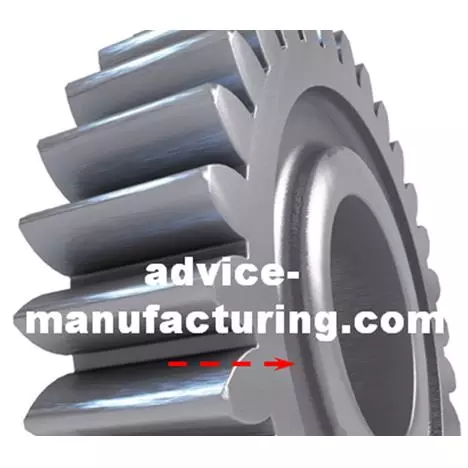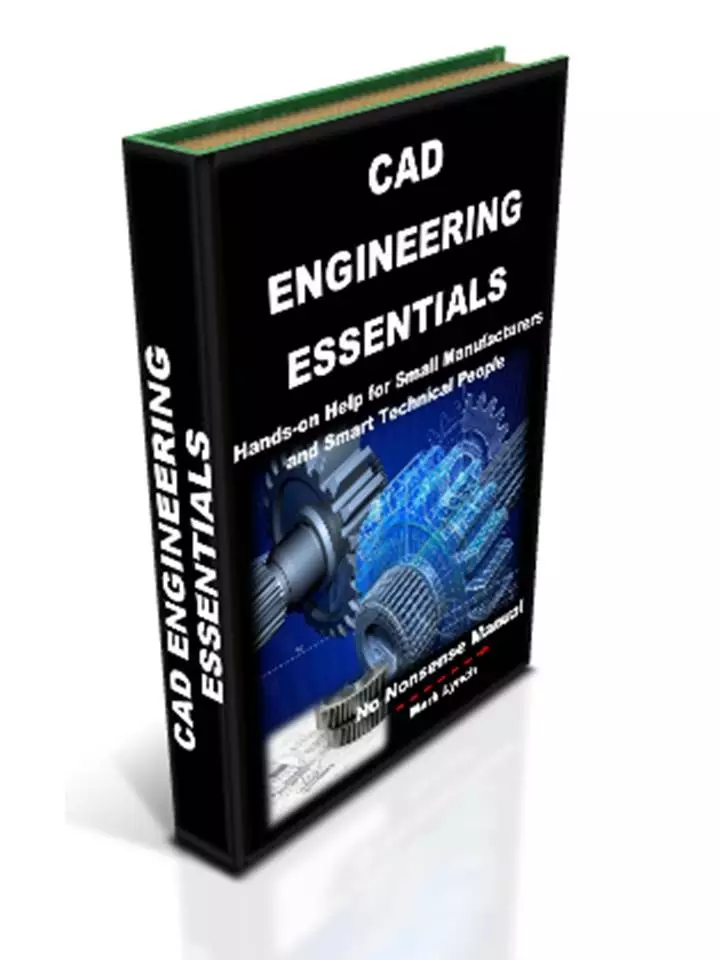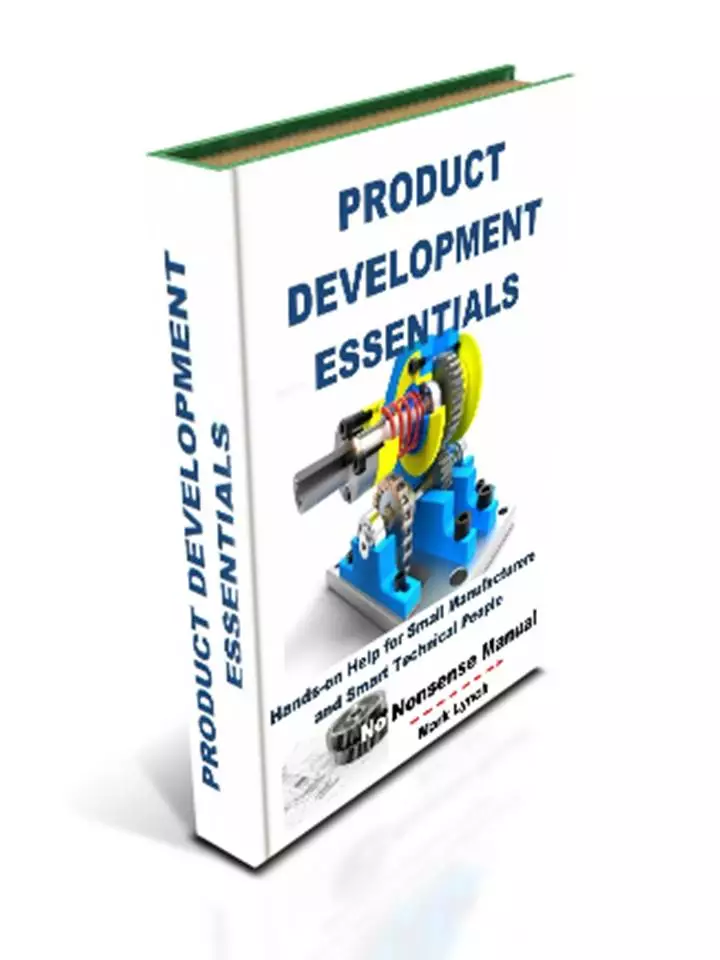'Hands-on Help for SMEs' and Smart Technical People'
Applied DFMA
Applied Design for
Manufacture and Assembly (DFMA): Practical Guidelines for Great
Engineering Design 1
Essential Product Development for Engineers
Applied DFMA: Practical Guidelines for Great Engineering Design 1
Design for Manufacture and Assembly (DFMA) – Explained
DFMA is all about designing products to be as cost effective and easy as possible to manufacture and assemble. Using a set of guidelines, features are designed into components to facilitate this. Value Engineering during new product development is the principle focus here. However in the context of Value Analysis of existing products, cost can be ‘designed out’ of parts, by using the same guidelines to remove unnecessarily expensive features. Note: Design for Manufacture and Assembly is sometimes known as DFX.
The Value of Getting Input from Experts
You'll find a comprehensive list of practical design for manufacturing (DFM) and design for assembly (DFA) tips below, and on the next few web pages. However, a recommended general rule is to ask an expert. It sounds obvious, but having a discussion with a supplier, machinist or manufacturer who actually undertakes the chosen manufacturing process can provide invaluable DFM advice, and so keep subsequent costs to a minimum and improve quality. Additionally, any drawing conventions, appropriate tolerances or useful annotation can be added to your CAD model or 2D engineering drawings, providing you with the reassurance your parts will be manufactured correctly. For specialist or rare manufacturing processes, this also has the added advantage of the design engineer better understanding the production method, including it's limitations and advantages. With this knowledge and awareness it becomes easier to design for manufacturing and assembly.
DFM Checklists to Embed the Benefits in Your Business
A good idea is to use the information in this section to form practical checklists to ensure the quality of your parts, prior to manufacture. CAD designed parts for CAM or for outsourcing can all benefit from a quick review/check based on the information below. It is time well invested. Why not forward these pages (digitally or as a checklist) to design engineer colleagues? Circulating best practice to your whole team is the best way of maximising design for manufacture and assembly benefits, like lower costs, quicker production and better quality. Use our information to avoid expensive defects, scrap, rework or even worse, locking in higher costs and poor quality throughout the entire time the component is produced.
Applied DFMA Example: Many parts, reduced to 1 assembly, where a number of the parts have multiple functions.
Applied DFMA Guidelines
Lots of research, academic and industrial work has been undertaken on DFMA guidelines. The author Henry W. Stoll is accredited with the list included below, as well as the phrase and acronym ‘design for manufacture’ or DFM.
Minimize the total number of parts
Reducing the number of parts that make up a product or assembly automatically reduces the cost and time taken for every stage of the design and manufacturing process. This makes sense, as the more parts there are, the more time and money it takes to develop and produce them. Naturally the opposite follows. If parts do not move against each other, can they be amalgamated and still manufactured with conventional processes? During value engineering, consider eliminating parts if they are redundant or there is no requirement for adjustment or service. Also consider integrated two parts into one. However, be aware parts should not be eliminated to the point where the ones that remain are over-complicated and costly to produce.
Develop Products with a Modular Design
Modular product design includes standard assemblies designed for a given function, which interface with each other to form the whole product. There are many advantages of modular design in terms of cost, production, assembly and training. Modular design also facilitates faster automation. Related to this is the idea of eliminating the requirement for a separate housing for assemblies already accommodated in the overall product enclosure.
Use Standard Parts and Components
Standardised parts should be used wherever possible. Such parts are nearly always cheaper than custom-made components. Standard consumable parts, such as mechanical fasteners, spacers, gaskets and fittings should be used as their performance and reliability are understood. Standard stock items are widely available and their quality is well established, as are their performance characteristics. They can be ordered very quickly in quantities to suit (and in a variety of colours for plastic). In additional, the responsibility for logistics and quality fall to the supplier.
Design components to be multi-functional
Design parts to perform more than one task. For example, structural supports for one component can be used to mount and house others. Spacers can provide alternative roles such as axles. Parts can be designed to be multi-functional, particular during assembly or manufacture. Try to avoid the need for additional fixtures, perhaps by using the largest part as an assembly base, onto which other components can be easily added. Design parts which are self-guiding and allow for easy location. Again, this reduces the overall number of parts, as well as assembly time and ultimately costs. Remember aesthetic requirements can also be coupled with other requirements.
Design components for multi-use
Many parts which perform very basic functions lend themselves to more than one use. Why not consider setting up a standard parts database or spread sheet. Here stock parts are known and used in value engineering or redesign exercises. New product design should exclusively use these parts. Selecting and ordering components in this way enables ordering and purchasing cost benefits, through economies of scale.
More Applied DFMA guidelines to follow here...
Back to Product Development Essentials
When was the last time your business developed a NEW product? ...Or is 'Product Development' too far removed from your core Production Engineering activities?
Does your firm have a clear product development process, with a number of new products released to date? ...Or alternatively, do you think bread and butter production engineering is really what matters? Tell us about your product development experiences...
Share your story...and receive a FREE copy of our report 'Helping Your Manufacturing Business Thrive'...
PS: Feel free to name-drop your firm! There's nothing wrong with a bit of free publicity!











